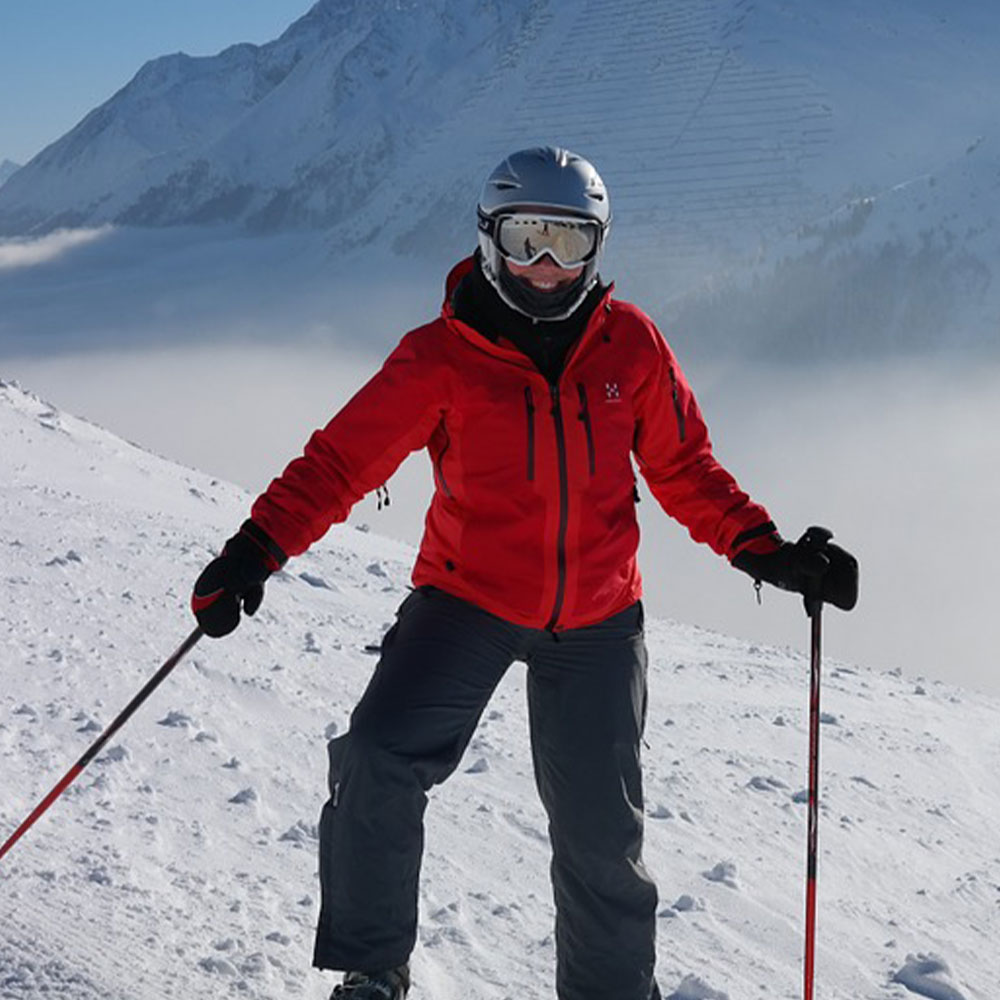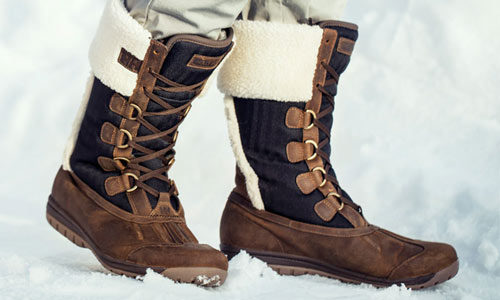Your Guide To Finding The Perfect Pair Of Snow Shoes!
Author

A keen runner, skier and nuts about cycling. Karl lives in Cumbria, where he loves encouraging his two children to follow in his outdoor lifestyle. Whilst out and about keeping active, Karl keeps a diary and shares it with Outdoor Look.
Moving around in the snow can be difficult if you are not wearing the right footwear. The challenge of going out and treading through snow covered land is daunting to many, which is why people stop hiking around the winter time. Without requiring any special talent, snowshoeing is a great way to break out of a monotonous and static winter routine.

Before I started snowshoeing, I got really confused when I went to buy a pair for myself. With an array of options available, each having different features and prices; it was difficult for me to make up my mind. The final result—I came back empty handed. It all changed after a tête-à-tête with my friend Josh who is a snowshoe veteran. With his valuable advice and my own venture into snowshoeing, I have now become quite an expert in making the right selection.
Holy Grail of Snowshoeing
The task of choosing the right snowshoes becomes quite easy if you know the crux of the shoe selection procedure. I call it BDM: Biding type, Deck shape, and material used. Getting to know about these features is nothing less than discovering the holy grail of snowshoeing.
It is important to learn about the specifics of snowshoeing. External factors and physical attributes of snowshoe wearer dictate the procedure of selecting the correct snowshoes. Go through the list below for greater detail:
1. Terrain Type
I have hilly terrain close to my home; it is the area I frequent often for getting my fill of snowshoe adventure. My favourite ‘Crescent Moon Shoes’ are ideal for an easy walk through this tough place. ‘Crescent Moon Shoes’ come under the category of backcountry shoes which are made specifically for hilly terrains. With rotating bindings, larger decks and heel lifts, these prized possessions of mine turn my walk through the hill into a walk in the park.
If you frequent steep and icy terrain, I recommend that you go for snowshoes with steel crampons. For people who prefer walking on flatlands, a simple recreational snowshoe will suffice.
2. Snow Depth
Gauging snow depth is quite crucial when it comes to choosing the right snowshoes. Snowshoeing exclusively on packed snow requires smaller sized shoes. On the other hand, if you are a perennial off-trailer like me, I would suggest that you go for snowshoes with a larger surface area.
3. Size and Weight
Selection of snowshoes highly depends on the body type of the snowshoe wearer. If you are heavier than normal or if you carry a large backpack with bulky items, you should buy a larger pair of snowshoes with wider deck. As women are generally lighter than men and have a slimmer frame, they should stick to smaller bindings to accommodate narrower stances and smaller feet. For children, it's a good idea to purchase lightweight models with bindings that are not too elaborate and complex.
4. Tail shape of snowshoe
The variations in snowshoe tail shape offer different modes of operation. If side hills and technical terrain are your path of choice, you should select tapered decks with V-shaped tails. Rounded and snowshoe tails provide more flotation and stability, which is needed for a comfortable experience and works best on flatlands covered with snow. If you run more often on snow, you should invest in lightweight snowshoes with narrower tails.
5. Snowshoe Bindings
Snowshoe bindings are of two types: fixed snowshoe bindings and rotating snowshoe bindings. Fixed snowshoe binding is perfect for navigation around obstacles. They are best suited for moderate terrains, groomed trails and packed snow. Rotating snowshoe bindings are a great choice for ascents and walking through deep snow; as they mimic a more natural foot motion.
Author

A keen runner, skier and nuts about cycling. Karl lives in Cumbria, where he loves encouraging his two children to follow in his outdoor lifestyle. Whilst out and about keeping active, Karl keeps a diary and shares it with Outdoor Look.
Categories
- Sport (28)
- Product Reviews (3)
- Team Outdoor Look (7)
- Mike Wild (2)
- Mike Payton (2)
- Suse Hammond-Pears (3)
- Snowboarding (12)
- Latest Offers (105)
- Shop Talk (1)
- Competitions (7)
- Walking (413)
- Lifestyle Fashion (8)
- Travel (86)
- Kit Guides (176)
- Workwear Clothing (6)
- Safety Workwear (4)
- Health/Fitness (289)
- Skiing (91)
- Great Outdoors (1316)
- Cycling (92)
- January 2025
- December 2024
- November 2024
- October 2024
- September 2024
- August 2024
- July 2024
- June 2024
- May 2024
- April 2024
- March 2024
- February 2024
- January 2024
- December 2023
- November 2023
- October 2023
- September 2023
- August 2023
- July 2023
- June 2023
- May 2023
- April 2023
- March 2023
- February 2023
- January 2023
- December 2022
- November 2022
- October 2022
- September 2022
- August 2022
- July 2022
- June 2022
- May 2022
- April 2022
- March 2022
- February 2022
- January 2022
- December 2021
- November 2021
- October 2021
- September 2021
- August 2021
- July 2021
- June 2021
- May 2021
- April 2021
- March 2021
- February 2021
- January 2021
- December 2020
- November 2020
- October 2020
- September 2020
- August 2020
- July 2020
- June 2020
- May 2020
- April 2020
- March 2020
- February 2020
- January 2020
- December 2019
- November 2019
- October 2019
- September 2019
- August 2019
- July 2019
- June 2019
- May 2019
- April 2019
- March 2019
- February 2019
- January 2019
- December 2018
- November 2018
- October 2018
- September 2018
- August 2018
- July 2018
- June 2018
- May 2018
- April 2018
- March 2018
- February 2018
- January 2018
- December 2017
- November 2017
- October 2017
- September 2017
- August 2017
- July 2017
- June 2017
- May 2017
- April 2017
- March 2017
- February 2017
- January 2017
- December 2016
- November 2016
- October 2016
- September 2016
- August 2016
- July 2016
- June 2016
- May 2016
- April 2016
- March 2016
- February 2016
- January 2016
- December 2015
- November 2015
- October 2015
- September 2015
- August 2015
- July 2015
- June 2015
- May 2015
- April 2015
- March 2015
- February 2015
- January 2015
- December 2014
- November 2014
- October 2014
- September 2014
- August 2014
- July 2014
- June 2014
- May 2014
- April 2014
- March 2014
- February 2014
- January 2014
- December 2013
- November 2013
- October 2013
- September 2013
- August 2013
- July 2013
- June 2013
- May 2013
- April 2013
- March 2013
- February 2013
- January 2013
- December 2012
- November 2012
- October 2012
- September 2012
- August 2012
- July 2012
- June 2012
- May 2012
- April 2012
- March 2012
- February 2012
- January 2012
- December 2011
- November 2011
- October 2011
- September 2011
- August 2011
- May 2010
- April 2010
- March 2010
- February 2010
- January 2010
- November 2009
- October 2009
- September 2009
Submit a Comment